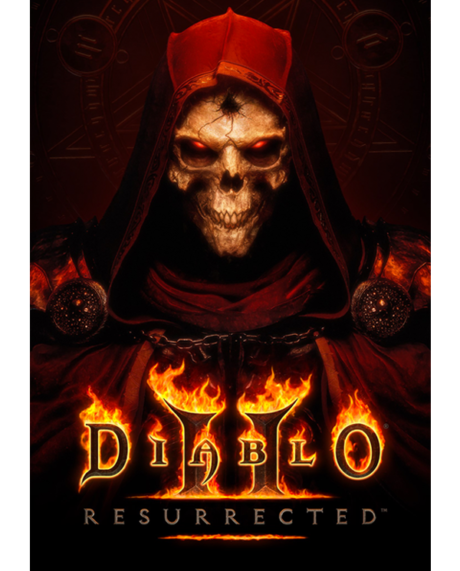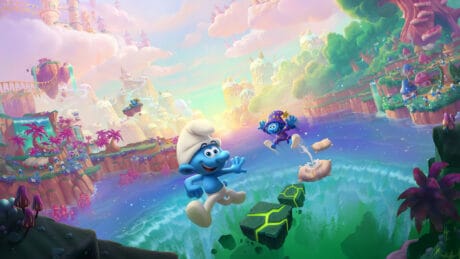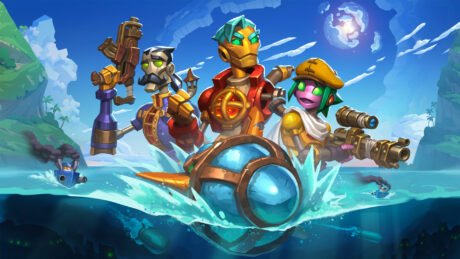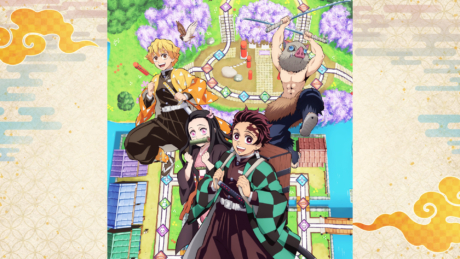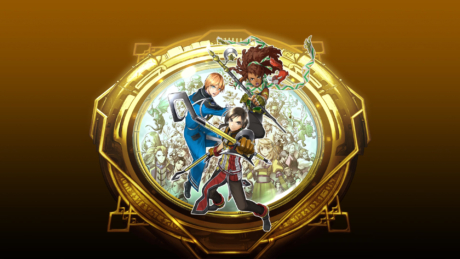Purrr....
- Surprisingly smooth play
- Impressive graphic overhaul
- Stash and gold improvements
Hisss!
- Multiplayer matchmaking issues
- Lack of co-op/splitscreen/cross-platform multiplayer
- Default controls
- Mobility feels sluggish
Platform
Switch, PlayStation 5, PlayStation 4, Xbox Series X, Xbox One, PCPublisher
Blizzard EntertainmentDeveloper
Blizzard EntertainmentSeries
DiabloGenre
Action, Adventure, Party, RPGPlayers
1-4File Size (Minimum)
7.7 GBRelease Date (NA)
Sep 23, 2021Release Date (JP)
Sep 24, 2021Filed Under
Diablo II: Resurrected is a hack-and-slash RPG developed and published by Blizzard Entertainment. It is a remastered version of the original Diablo II, which is revered as one of the great games in the genre 20 years ago. Alongside new graphics, there are several improvements to the gameplay while also sticking close to the original. Pick your champion and battle your way to the gates of hell and beyond to take on Diablo, Mephisto, and Baal.
Hell is Back, Alright!
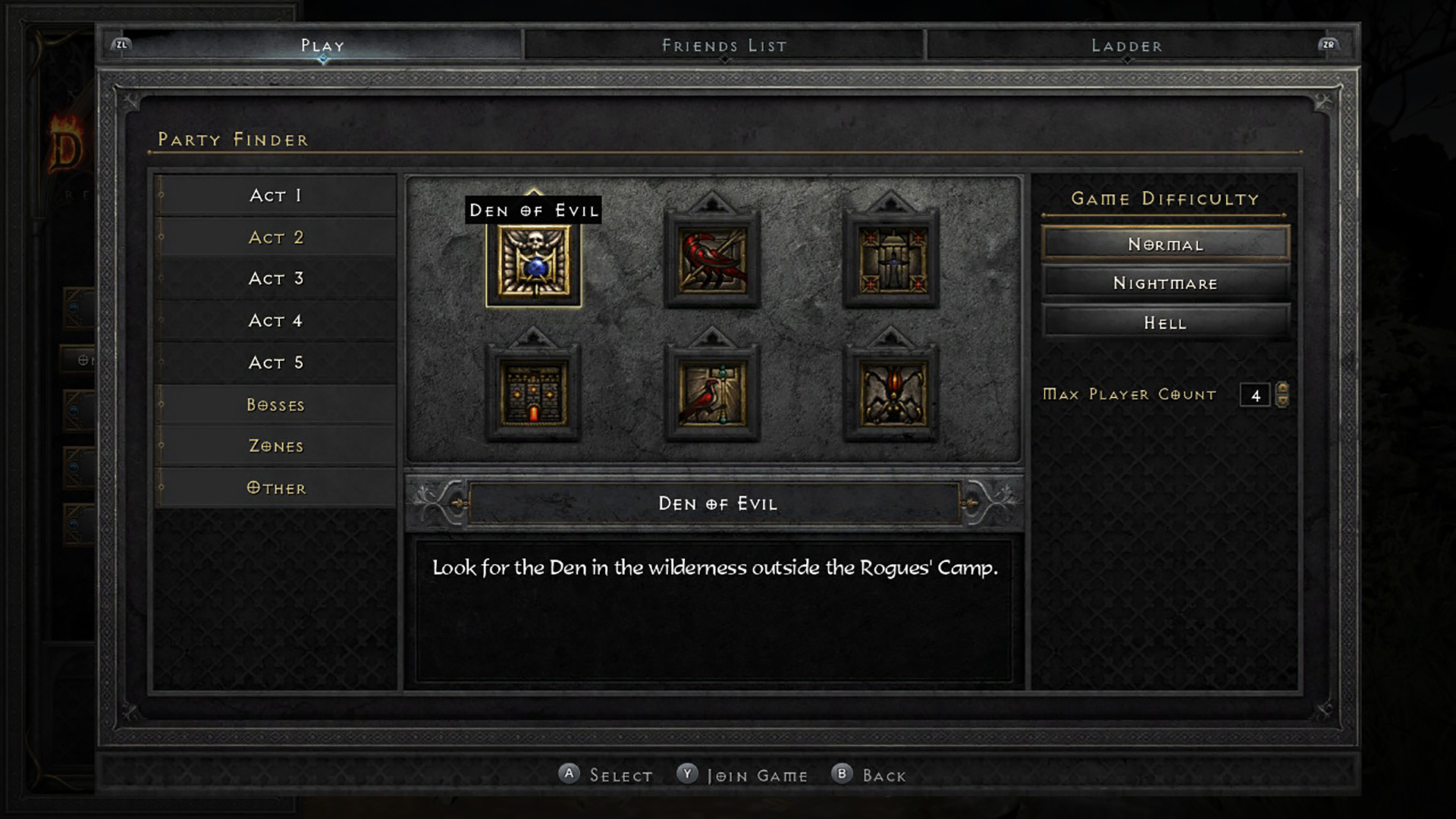
The story continues from the original Diablo. The demon Diablo was defeated, but the hero who slayed him becomes corrupted by the Lord of Terror’s essence, which allows demons to enter the world again. Diablo II picks up with a group of adventurers entering the Rogue Encampment to investigate the evil that started with this corrupted Dark Wanderer. Meanwhile, a drifter named Marius is shown in a prison cell and tells his story to a hooded stranger about his previous experiences in which he followed the Dark Wanderer. The story progresses through a series of five acts, each full of corruption and evil. The adventurers are tasked with taking on the Prime Evils and destroying their soulstones so that the demons cannot return to the mortal realm.
Almost Full Control
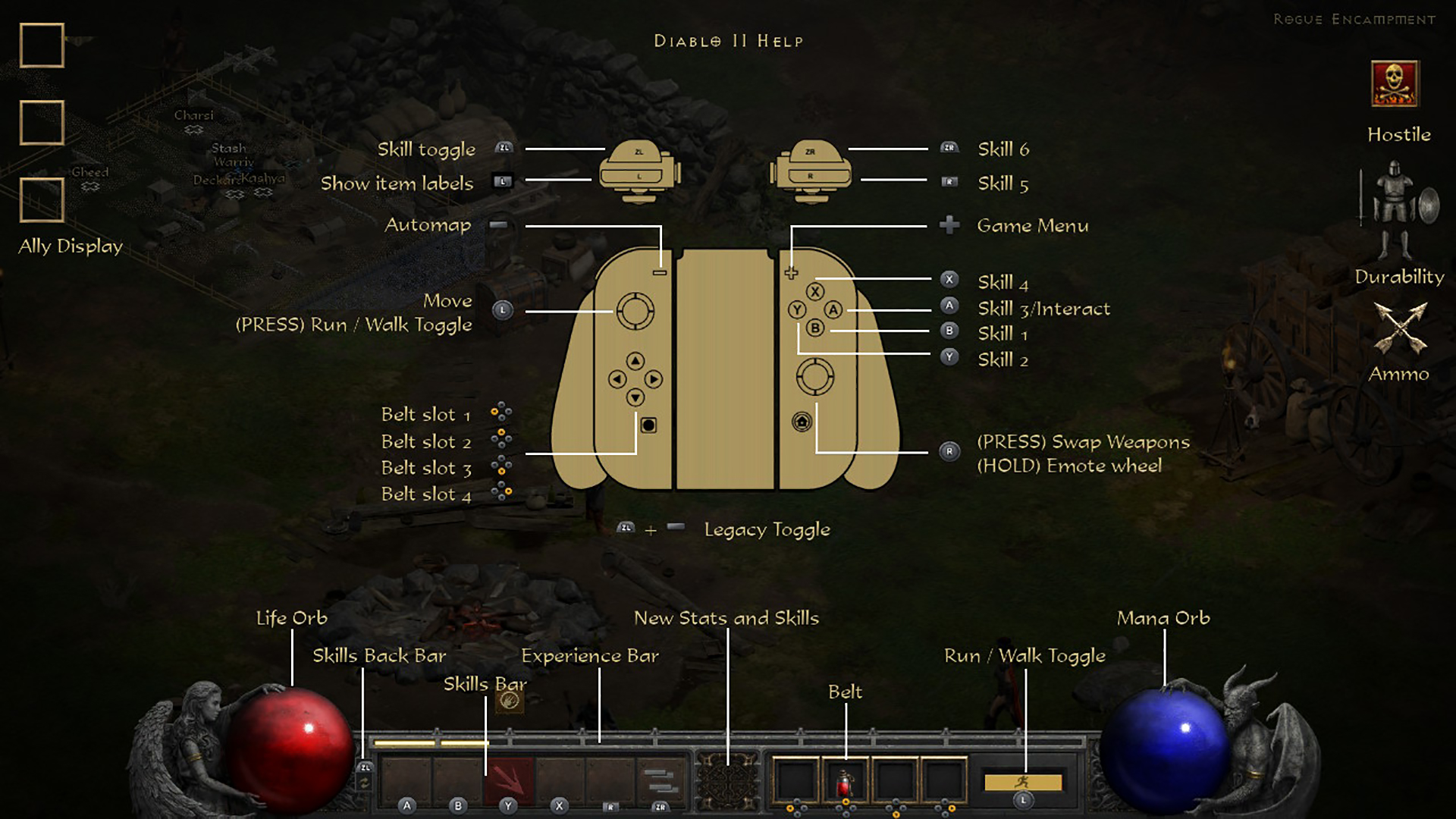
On the Switch, players have the ability to bind a series of hotkeys to actions such as activating the Paladin’s Might ability or the Sorceress’s Fireball. This feature seems slick and quite useful compared to the PC settings that have players scrolling the mouse wheel or hitting the number key to change skills. Though, in the default settings, the attack button is the same as the item pick-up button, and it becomes instantly frustrating as attacking quickly fills up the inventory. It seems odd that a player would have to change the default settings about 5-10 minutes into the game, but here we are. Anyway, the other noted change from the original PC version is the inventory management. It’s clearly optimized for a mouse as opposed to an analog stick, and moving items around on the Switch controller is less efficient in comparison and rather tedious.
While it is nice to remap the controls for attacks and skills on the controller, some functionality is not customizable nor is it easily discoverable. For example, healing the mercenary (your helper in battle) requires the use of ZL + a d-pad direction, which is not evident to veterans and much less to newcomers to the franchise. Another example is the ability to auto-fill potions or top off potions and scrolls at the shop. Most players will be manually moving potions or individually buying scrolls and potions without an efficient or effective way similar to the original PC version, which can get tedious due to the grind of the game. In searching the player forums, however, it’s learned that holding down the analog stick over the belt can auto-fill potions and scrolls. Despite this, it’s still not ideal since it is based upon the player’s inventory and not on filling them from the shop. Since the game is a remaster, it would be helpful to have a listing of all the controller settings, along with the ability to change not only the binding but also the functionality of these buttons (e.g., auto-fill potion vs auto-fill one type of potion). Under the menu, there is a Help button under the options tab which shows various controller button assignments, but it does not explain the more intricate controls mentioned above.
Hack and Slash
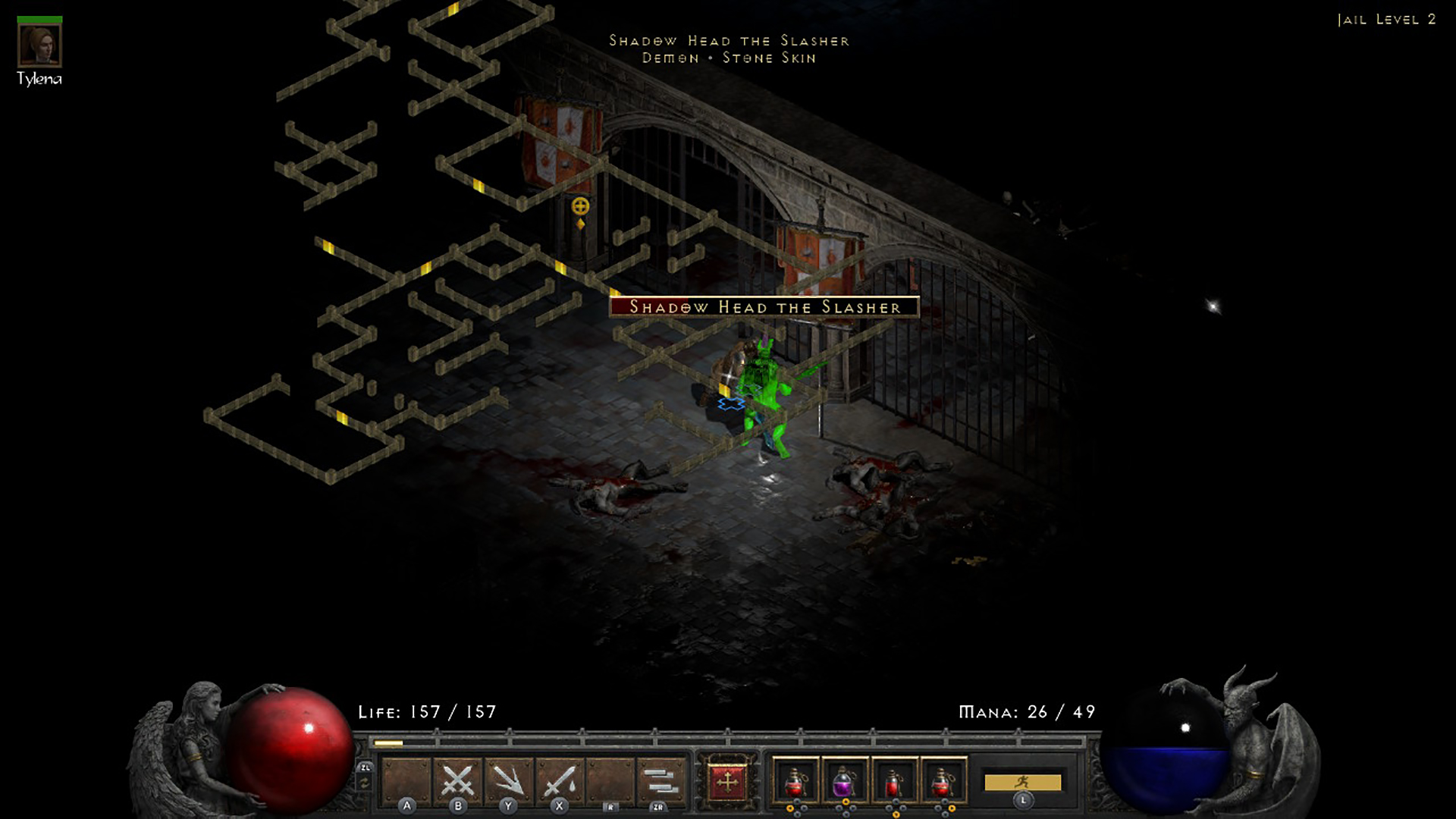
Movement seems a bit sluggish compared to the original game, but that is likely due to visual changes with the remastered version (e.g., a wider view, which is helpful in seeing more and aiming farther out in battle). While the original had its fair share of bugs, the remastered version has similar issues with getting around, such as sluggish movement around objects like jars and barrels on the ground, traveling on stairs, and getting caught in the doorway. Some of these almost seem worse than the original. It’s easy to imagine Tomb runs being completely frustrating to a veteran, getting swarmed and dying because you got caught on those objects.
Combat is on par with the original with one subtle change. Previously, missed attacks were hard to tell before, but with the remaster, there is a visible white X over the monster to show one. With the console controller, it can be difficult to attack a particular monster outside of a directional attack. While not a huge issue, it can be noticeable when getting swarmed by mobs with unique monsters (e.g., cold/freezing types or lightning), creating problems, especially when you’re not overpowered.
Limited Mules, No Problems

One of the best features added to this remaster is the expansion of the stash chest to include personal items and three shared tabs that can help move gear between characters. This keeps players from creating mules and constantly hopping between characters to exchange items little by little. In addition to the storage space, gold has two separate storage locations: a personal gold stash and a shared gold stash for each storage tab. Less time spent managing the mules and storage locations for items and gold makes for more time killing demons. To make the remaster version even better, the game also has an auto-gold pickup function to alleviate having to pick all the little pieces of gold dropped during the adventure.
Gear and item wise, the game is the spitting image of the original with weapons, armor, and jewelry to be equipped to give your character additional attributes and/or deal more damage. The game will continue to have the same crafting and cube recipes and runewords available (runewords give non-magical socketed weapons and armor some impressive stats if used in a particular order on the correct item). One fantastic change is that the meta-runewords will be available in single player, whereas formerly they could only be used in the ladder scene. This change is great for casual players as it can be difficult to get those late-game runes due to the odds in the timeframe of the ladder season (formerly, a six-month schedule). It has yet to be seen if there will be any rebalancing or new runewords added after post-launch, but it would provide an enticing incentive for veteran players.
Isolating Experience
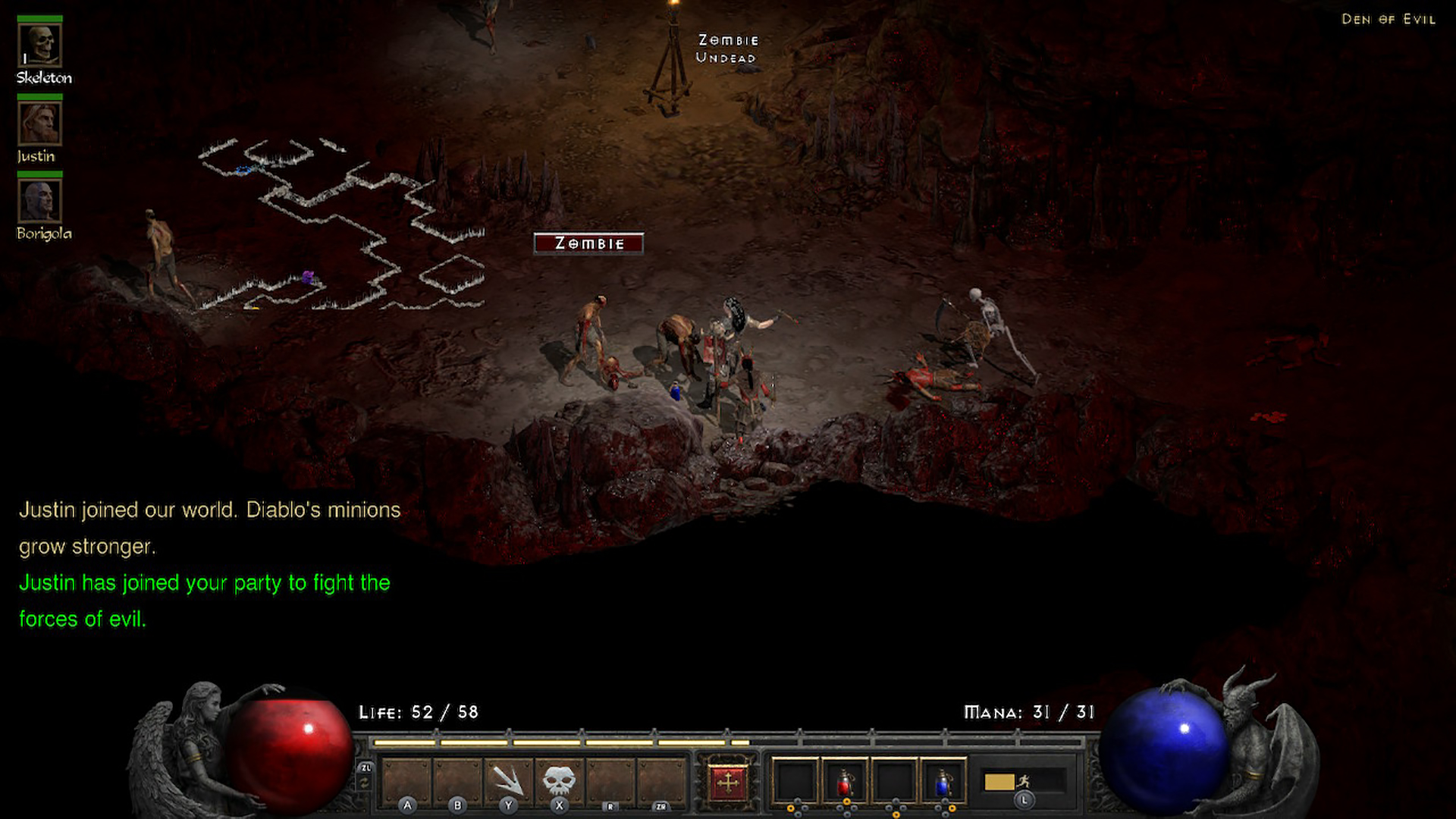
As of this writing, it does not appear that there is any cross-platform play available (possibly due to the Switch hardware) or local splitscreen/co-op. While the game advertises a multiplayer option for up to 4 people online, it does not appear to be a realistic option at this time due to the size of the community on the Switch console. It should be noted that this feature may be available later as online game creation allows for two options: private solo game and multiplayer game.
Oddly, the multiplayer game creation has a join button and allows for a selection for activities, such as free roam or Tristam runs as well as chapter quest selection. Despite picking various options to create a game, it does not appear that the game is able to join with others or allow for others to join your game. For example, the original game has a list of on-going game names with the number of players that can join, and provides for the creation of games with settings that others can potentially join. Act 1 games tend to match with others (usually short lived),but the others tend to not match with anyone, which could signal to the size of the community on the Switch. There is a tab under multiplayer that lets you see your friends, so if you and a friend are both on the Switch playing the game, then you can potentially create a private game together (unfortunately, this feature is unable to be tested at this time). While there is cross-progression available in case you hop between Switch and PC in order to play the game, cross platform multiplayer is not available for the Switch, which may limit the community size.
At this time, the matchmaking and smaller community size are big limitations to be noted for this game on the Switch as multiplayer makes the grind more bearable. For example, certain bosses such as Act 2’s Duriel tend to be more do-able with other people since he can slow characters’ movement and hit quite hard. The limited functional multiplayer feature on the Switch is isolating and emphasizes the grind to progress through the game. At least for cross-progression, it allows people to play the same character on the Switch while away from their main console. However, in order to play the same character, the Switch needs to have access to the internet to connect to the battle.net server. It is worth noting that servers had quite a bit of trouble at launch and there have been server issues off and on impacting the Switch lately. That said, it is possible to play a different offline character without the internet or if you’re unable to connect to the battle.net servers.
Cosmetic Facelift
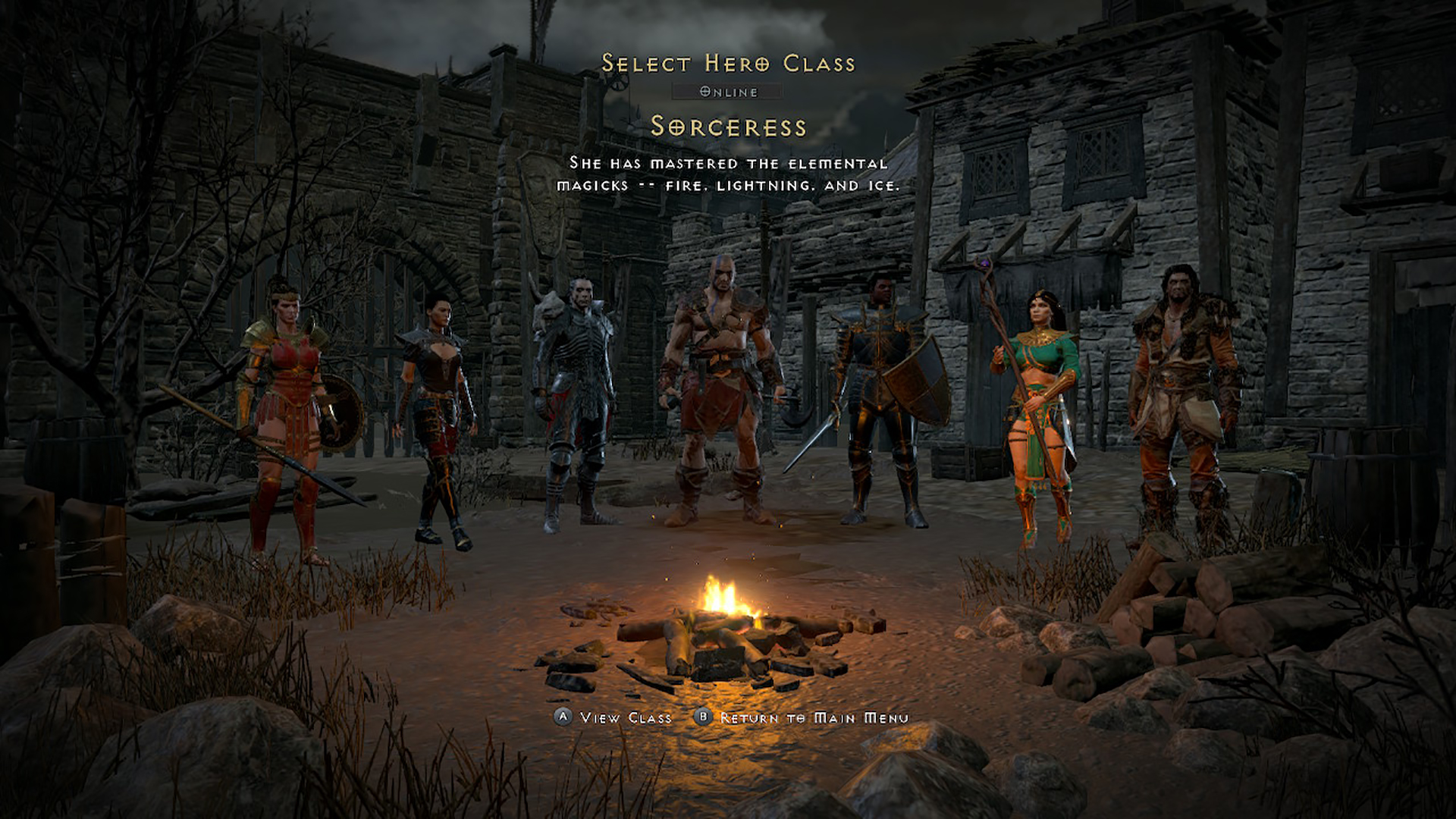
The in-game graphics and cutscenes have received a major upgrade from the original game. Despite how impressive the graphics have become, the Switch runs pretty smooth in both docked and handheld modes. There are occasional frame drops on the handheld version, but it doesn’t detract from the experience. Additionally, there is a way to toggle between the original game graphics (2D) and the remastered version (3D) instantly in-game. The cutscenes are quite impressive, with the visual details, length, and classic voiceovers giving veteran players a new but faithful experience. It is the subtleties of the character, level, lighting, and monsters that create a different and more immersive experience.
There are seven champions to pick from (the same as original), including the Druid and the Assassin from the expansion. While characters have gone through numerous design changes during development, the final designs are quite detailed and remain close to originals. The previews on the character selection screen are neat, showing the character with their current weapon and armor. Character animations have received a makeover as well, with finer details such as hair or parts of clothing moving. In a perfect world, it would be neat to see character customization such as gender and appearances. However, this would be a lofty wish in a remake.
Immersive But Flawed
Overall, Diablo II: Resurrected is an impressive facelift of the original games with some fantastic quality-of-life improvements added in. The remastered solo play is quite impressive on the Switch, even given the existing hardware limitations. Unfortunately, the current issues with matchmaking, community size, and servers on the Switch are a huge blemish on the experience due to the grinding nature of solo play, but those can be resolved in time and earn higher marks as a result. The game can still provide one hell of an experience for those who prefer solo action or for folks using it for cross-platform progression while traveling. Purge this land of shadow, and may the light guide your way.
A Nintendo Switch code was provided for this review.
